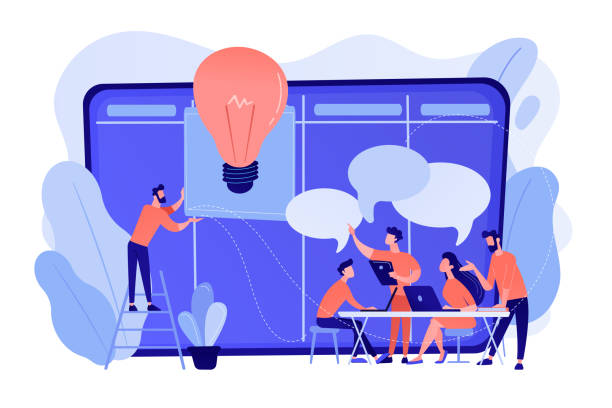Familiarity with On-Page SEO and its Place in Digital Marketing Strategy
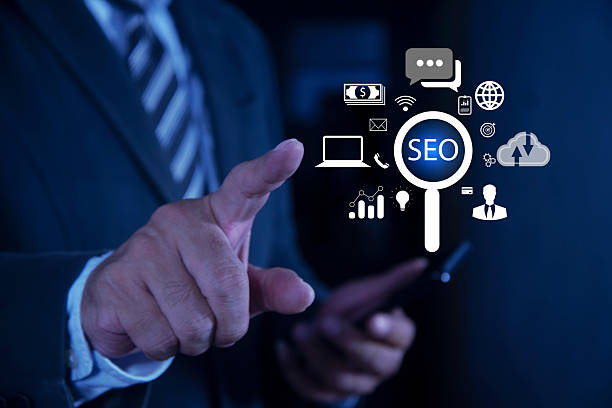
In today’s highly competitive world, a strong online presence is vital for any business.
#On_Page_SEO (On-Page SEO) or on-page optimization, is considered one of the most fundamental pillars of success in this field.
Unlike off-page SEO, which focuses on factors outside the website, on-page optimization includes all the actions you can take within your website to improve its ranking in search engine results.
These actions range from content optimization to the technical structure of the site, helping search engines better understand your content and recognize its value.
The importance of this area stems from the fact that you have complete control over it and can directly improve the quality and relevance of your content for users and search engines.
Did you know that strong on-page SEO can significantly increase your website’s organic traffic? This not only helps with greater visibility but also leads to attracting more targeted audiences and ultimately increasing conversion rates.
This explanatory section is the first step to understanding deeper concepts of on-page optimization.
Tired of your company’s website not being seen as it deserves and losing potential customers? Solve this problem forever with professional and effective website design by Rasavab!
✅ Increase brand credibility and gain customer trust
✅ Attract targeted sales leads
⚡ Contact us now for a free consultation!
Keywords and Their Importance in On-Page SEO Strategy

Choosing the right #keywords is the pulse of any successful on-page SEO strategy.
Before undertaking any optimization efforts, you must know exactly what your target audience is searching for.
This expert guide shows you how to lay the foundation for strong SEO through thorough keyword research.
Keywords must not only be relevant to your content but also have a suitable search volume, and their competitiveness should be considered.
Tools like Google Keyword Planner, Ahrefs, or Semrush can greatly assist you in this journey.
After finding suitable keywords, the next step is strategically placing them within your content.
This includes the page title, meta description, subheadings (H1, H2, H3), main text, and even image names.
But most importantly, it’s about being natural and avoiding excessive use of keywords (Keyword Stuffing), as this will not only fail to help your ranking but can also lead to penalties from search engines.
Remember that the ultimate goal is to provide valuable and relevant content to the user, and keywords are merely a tool to achieve this goal.
On-page SEO is not just about words; it’s about understanding and responding to user needs.
Content Optimization for On-Page SEO and Audience Engagement
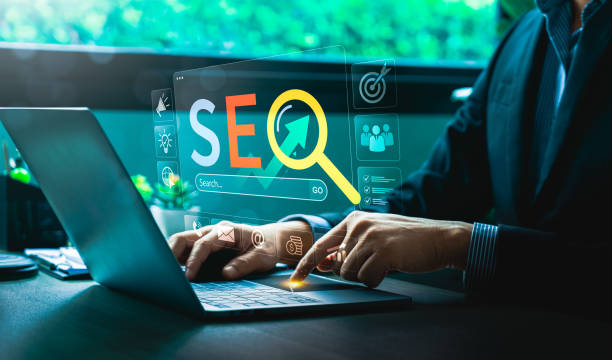
Content is the #king_of_SEO, and this statement holds true for on-page SEO more than ever.
Producing high-quality and valuable content is the primary factor in attracting and retaining audiences and improving your site’s ranking in search results.
This educational and expert section shows you how to write content that is both engaging for users and understandable for search engines.
Content length, structure, natural use of related keywords (not just primary keywords), and the use of diverse media like images and videos all play a role in this.
Expert content and in-depth content generally performs better in search results, as it demonstrates your authority in your field.
Content readability is also highly important; short sentences, concise paragraphs, and the use of lists help users absorb information more quickly and easily.
Does your content answer potential user questions? Does it provide comprehensive and complete information? Content optimization is a vital component of on-page SEO and your online success.
Below is a table of key elements of SEO-optimized content:
| Content Element | Description and Importance in On-Page SEO |
|---|---|
| Compelling Title (H1) | Includes the main keyword and is attractive to both users and search engines. |
| Comprehensive and In-depth Content | Provides complete information and addresses all aspects of the topic. |
| Natural Use of Keywords | Proper distribution of main and LSI keywords throughout the text. |
| Appropriate Visual Structure | Use of subheadings (H2, H3), short paragraphs, and lists. |
| Diverse Media | Images, videos, infographics to increase user engagement. |
The Importance of Title Tags and Meta Descriptions in On-Page SEO
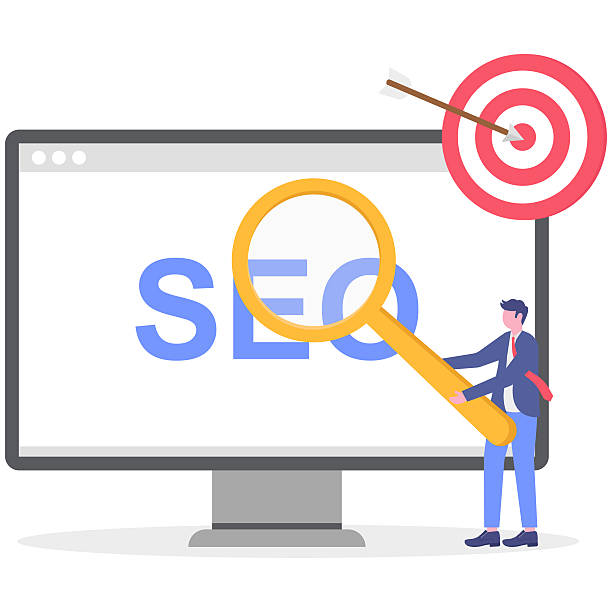
The Title Tag and Meta Description are the #first_interaction users have with your website on the search engine results page (SERP).
These two vital elements not only help search engines understand your page’s content but also play a crucial role in encouraging users to click on your link.
An optimized title tag should contain the main keyword, be concise and appealing, and provide accurate information about the page’s content.
The ideal length for a title tag is typically between 50 and 60 characters to ensure it is fully displayed in search results.
The meta description is a brief summary that appears below the page title in search results.
Although the meta description does not directly impact on-page SEO ranking, it plays a significant role in the click-through rate (CTR).
A good meta description should include the main keyword, a call to action, and an engaging summary of the page’s content.
Its ideal length is usually between 150 and 160 characters.
The more relevant information these two elements can provide and the more they entice users, the higher the likelihood of clicks on your link, which in turn is a positive signal for search engines and helps improve your on-page SEO.
Does your company’s website create a professional and lasting first impression in the minds of potential customers? Rasavab, with its professional corporate website design, not only represents your brand’s credibility but also opens a path for your business growth.
✅ Create a powerful and trustworthy brand image
✅ Attract targeted customers and increase sales
⚡ Get free consultation
URL Structure and Site Information Architecture in On-Page SEO
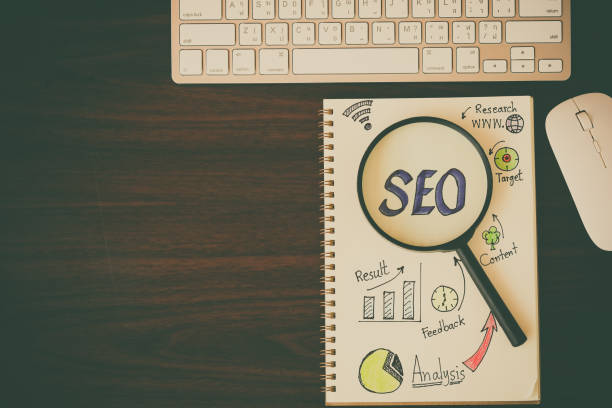
Logical #site_structure and optimized URLs are important factors in on-page SEO that are often overlooked.
A readable and meaningful URL not only helps users better understand the page’s content but also assists search engines in comprehending the page’s topic.
Clean and short URLs that include primary keywords are preferred.
For example, instead of “yoursite.com/?p=123″, a URL like “yoursite.com/blog/onpage-seo-guide” is much better.
Site Information Architecture also refers to how your website’s pages are organized.
A hierarchical and logical structure that moves from the homepage to categories and then to specific pages helps search engine crawlers easily discover and index your content.
Furthermore, this structure helps improve user experience (UX), as users can easily navigate your site.
Using breadcrumbs and clear navigation menus are examples of important strategies in this area.
Professional on-page SEO requires attention to structural details, as a well-organized website is more user-friendly for both users and search engines.
This section provides important guidance for optimizing these technical aspects of On-Page SEO.
Image Optimization for On-Page SEO and Increased Traffic
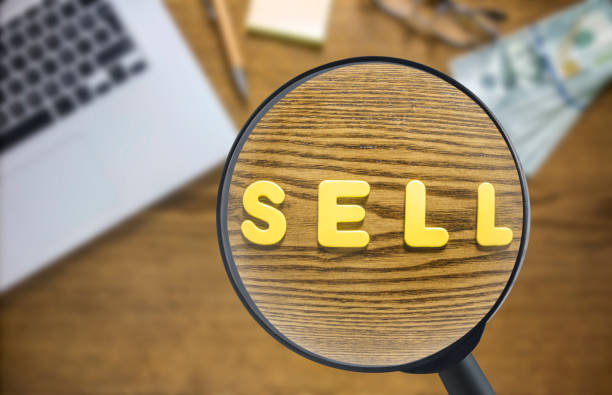
Images play a vital role in user engagement and message delivery, but if not properly optimized, they can become a major hindrance to your #site_speed and consequently your #on_page_SEO, instead of being helpful.
Image optimization involves several steps, the first and most important of which is the Alt tag (Alt Text).
The Alt tag is a textual description for an image that is read by search engines and displayed in place of the image if it fails to load.
This tag should include a keyword relevant to the image and page content, and provide an accurate description of the image.
The second point is image compression to reduce their size.
Large images can significantly slow down page loading speed, which is a negative factor in both on-page SEO ranking and user experience.
There are many online tools and WordPress plugins available for compressing images without losing quality.
Choosing the correct image format (such as JPEG for photos and PNG for graphics and icons) and using responsive images that display well across different screen sizes are also key points.
Optimizing the image file name is also important; the file name should be descriptive and include keywords (e.g., “onpage-seo-guide.jpg” instead of “IMG001.jpg”).
These specialized actions not only help improve on-page SEO but also enhance your website’s accessibility and can drive significant traffic to your site through image search.
Internal and External Linking and Its Role in Improving On-Page SEO
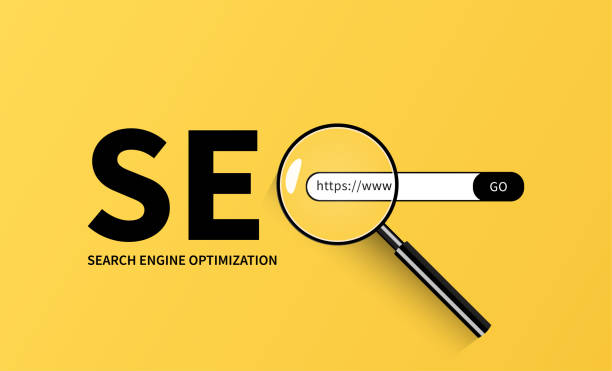
Links are the #lifeline of websites and play a pivotal role in both on-page and off-page SEO.
Internal linking means creating links between different pages of your own website.
This not only helps search engines better understand your site’s structure and discover deeper pages but also distributes SEO power (Link Equity) throughout your site.
On the other hand, external linking (outbound linking) means linking to credible and relevant resources on other websites.
This shows search engines that your content is connected to trustworthy information sources and can help improve your page’s authority.
In on-page SEO, using relevant and descriptive anchor texts for internal links is crucial.
Anchor text tells search engines what the linked page is about.
Use strategic internal linking to strengthen more important pages and transfer SEO power to them.
For example, from a comprehensive article on on-page SEO, link to more detailed articles such as “Keyword Research” or “Image Optimization”.
Also, identify and fix broken links, as they can disrupt user experience and harm your on-page optimization ranking.
Below is a table of internal linking types and their uses:
| Type of Internal Linking | Application and Importance |
|---|---|
| Navigation Links (Menu) | Guiding users and search engines through the main site structure. |
| Contextual Links | Creating semantic connections between pages and transferring PageRank. |
| Breadcrumbs | Assisting user and search engine navigation in the hierarchical path. |
| Footer Links | Linking to important pages such as privacy policy, contact us, and sitemap. |
Site Loading Speed and User Experience (UX); Hidden Factors of On-Page SEO
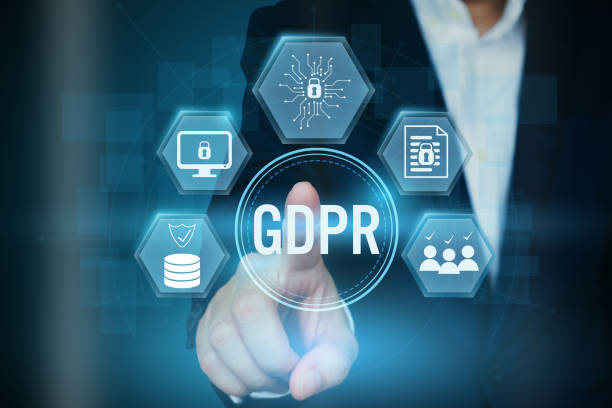
In today’s era, users expect websites to load #instantly.
Page Speed is not only a crucial factor in user experience (UX) but also directly impacts your on-page SEO.
Google has repeatedly stated that site speed is a ranking factor, especially with the introduction of Core Web Vitals, which provide specific metrics for evaluating page speed and visual stability.
A slowly loading website leads to an increased bounce rate and decreased user dwell time on the site, both of which are negative signals for search engines.
To improve site speed, you can take actions such as compressing images, using caching, optimizing code (CSS, JavaScript, HTML), and choosing a fast and reliable hosting provider.
Furthermore, ensuring your website is mobile-friendly is crucial, as a significant portion of internet traffic comes from mobile devices, and Google has adopted a Mobile-First Indexing approach.
Analyzing speed and user experience helps you identify and resolve weaknesses, thereby significantly improving your on-page SEO ranking.
This often informational and analytical aspect requires continuous monitoring.
Disappointed with your e-commerce site’s low conversion rate? Rasavab transforms your online store into a powerful tool for attracting and converting customers!
✅ Significant increase in visitor-to-buyer conversion rate
✅ Unparalleled user experience to boost customer satisfaction and loyalty⚡ Get a free consultation from Rasavab!
Advanced Tips and Effective Tools in On-Page SEO

After covering the basics, it’s time for #advanced_techniques that can elevate your on-page SEO to the next level.
One of the most important of these techniques is the use of Schema Markup.
Schema are codes added to your website to help search engines better understand specific information about your content and display it in richer forms (Rich Snippets) in search results.
This can help increase click-through rates, even if your ranking doesn’t change.
For example, you can implement schema for products, reviews, recipes, events, and more.
Also, tools like Google Search Console are crucial for monitoring your on-page SEO performance.
This tool helps you view and analyze technical site issues, crawling errors, keyword performance, and other important data.
Using robots.txt to control crawler access to specific parts of the site and sitemap.xml to help search engines discover all site pages are also specialized actions that should be considered.
These techniques may seem complex, but they will have a significant impact on your overall on-page optimization performance.
Monitoring and Analyzing On-Page SEO Results for Continuous Improvement
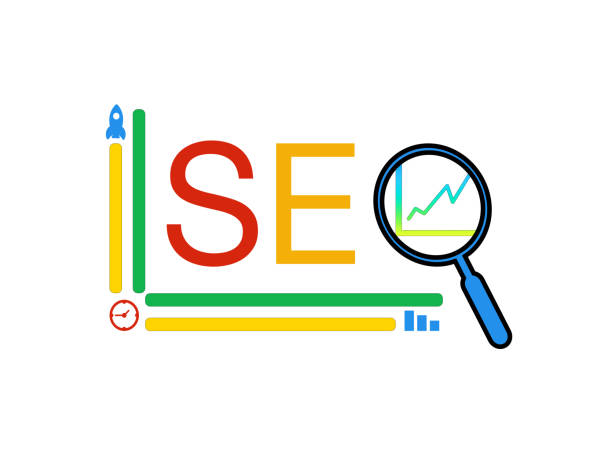
On-page SEO is a #continuous process and does not end with a single optimization.
To ensure the effectiveness of your efforts and identify new opportunities for improvement, monitoring and analyzing results are essential.
This section is the final guide for maintaining and continuously enhancing your on-page SEO performance.
Tools like Google Analytics and Google Search Console provide valuable information about website traffic, user behavior, keywords through which users reach your site, and technical issues.
By analyzing bounce rate, user dwell time on the site, pages visited, and conversion rates, you can gain a better understanding of how users interact with your content.
Do users read your content completely? Do they navigate to other pages of the site? Identifying poorly performing pages, finding new keywords that offer ranking opportunities, and competitor analysis are all part of this continuous monitoring process.
Based on these analyses, you can refine your on-page SEO strategy, update existing content, or produce new content to better meet the needs of users and search engines.
This analytical and iterative approach ensures that your website is always on track for improvement and achieving the highest rankings in search results.
Frequently Asked Questions
| Question | Answer |
|---|---|
| What is On-page SEO? | On-page SEO refers to a set of actions performed within your website to improve its ranking in search engine results. This includes optimizing content, site structure, and HTML code. |
| Why is On-page SEO important? | On-page SEO helps search engines understand your page’s content and determine if your content is relevant to searchers. It is the foundation of any successful SEO strategy. |
| What are the key elements of On-page SEO? | Page title (Title Tag), meta description, keyword usage, image optimization, heading structure (H1, H2, …), internal linking, and content quality are key elements. |
| How to optimize the page title (Title Tag)? | The page title should include the main keyword, be attractive and clickable, and be between 50 to 60 characters long (or appropriate pixels) to be fully displayed in search results. |
| What role does the Meta Description play in On-page SEO? | The meta description is a summary of the page’s content that appears below the title in search results. Although it does not directly affect ranking, it helps SEO by increasing the click-through rate (CTR). |
| What is the importance of using heading structure (H1, H2, H3) in On-page SEO? | Headings structure the page content and make it easier to read. H1 is usually the main title of the page and should include the keyword. H2 and H3 are used to organize sub-sections and help search engines understand the content’s hierarchy. |
| How to effectively use keywords in content? | Keywords should be used naturally and logically throughout the content, including the introduction, body, and conclusion. Avoid keyword stuffing. |
| What steps are involved in optimizing images for On-page SEO? | It includes compressing images to reduce size, using descriptive file names, adding appropriate alternative text (Alt Text), and optimizing the image title and description. Alt Text is crucial for accessibility and helping search engines understand image content. |
| What is Internal Linking and what are its benefits? | Internal linking means creating links from one page on your website to another page on the same website. This helps users easily navigate your site, distributes page authority across the site, and helps search engines better understand your site’s structure. |
| What is the importance of content quality in On-page SEO? | High-quality, accurate, comprehensive, and valuable content for users is the cornerstone of on-page SEO. Search engines prefer content that meets user needs. Quality content leads to longer user dwell time on the site and a reduced bounce rate, which are positive SEO signals. |
And other advertising services of Rasa Web advertising agency
Smart SEO: A novel service for increasing digital branding through user experience customization.
Smart Conversion Rate Optimization: A fast and efficient solution for digital branding focusing on attractive UI design.
Smart Marketing Automation: Designed for businesses seeking online growth through user experience customization.
Smart Marketing Automation: An innovative platform for improving campaign management by optimizing key pages.
Smart UI/UX: Designed for businesses seeking to increase click-through rates through marketing automation.
And hundreds of other services in the field of internet advertising, advertising consultation, and organizational solutions.
Internet Advertising | Advertising Strategy | Advertorial
Sources
Comprehensive On-Page SEO Guide
Professional Internal Linking
Keyword Research for SEO
On-Page SEO Guide
? For your business to leap forward in the digital world and reach more customers, Rasavab Digital Marketing Agency, specializing in user-friendly website design and comprehensive online marketing solutions, is with you.
📍 Tehran, Mirdamad Street, next to Bank Markazi, Kazerun Jonubi Alley, Ramin Alley, No. 6


